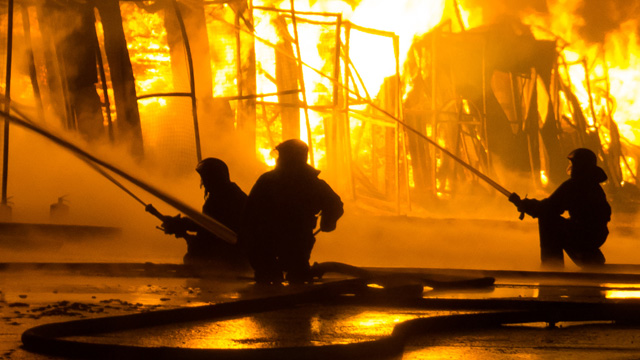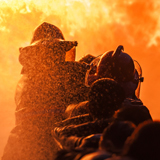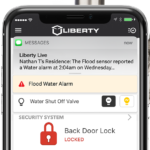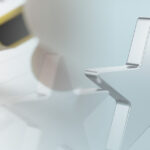Fire statistics show that most fire injuries and deaths occur in the home. The majority of fire injuries and deaths can be prevented by following a few, simple fire safety tips and knowing about potential hazards. This year’s theme for Fire Prevention Week is “Not every hero wears a cape. Plan and practice your escape.” In this blog, we go over best practices for fire escape planning as well.
Fire Prevention and Safety
In the event of a fire emergency:
- Remove yourself and others from immediate danger
- Close all doors
- 911 is your number for help in all emergencies
- Call 911 from a safe location
- Stay Calm
- Visit www.3minutedrill.alberta.ca for more information
Smoke Alarms
A smoke alarm is your first line of defense if there is a fire in your home. Early detection is vital for survival. Most fire fatalities occur as a result of breathing in smoke and toxic gases, not from the fire itself.
Smoke alarms should be installed on every level of your home and outside all sleeping areas. They should be tested monthly and replaced every ten years.
Batteries should be replaced at least once a year.
Carbon Monoxide (CO) Alarms
Carbon Monoxide (CO) is called the silent killer because it has no odour. Gas heating appliances, cooking systems, fireplaces, and attached garages are all sources of CO that can contaminate your home. Carbon monoxide can ignite or even explode when it builds up in an enclosed, unventilated area and comes in contact with a spark or flames, making a carbon monoxide leak not only a health concern, but also a fire hazard. Proper maintenance of these systems, by qualified professionals, is very important.
Install a CO detector near bedrooms to provide an early warning of this toxic gas. Battery-operated alarms should have their batteries replaced once a year and all CO alarms should be tested monthly to ensure they are working properly.
Using Candles Safely
Candles are one of the leading causes of fires in the home. Follow these simple tips to keep your family safe:
- Never leave a burning candle unattended – even for a few moments
- Never leave a candle burning while you are asleep
- Candles must be secured in a non-combustible holder
- Keep candles out of the reach of children and pets
- Never place a candle near combustibles such as papers, decorations or drapes
- Candle wicks should be cut to approximately ¼ inch prior to lighting
- When you GO OUT, BLOW OUT
Cooking with Care
Cooking is the leading cause of fires in homes. If you have a cooking fire in a pot or pan, slowly slide a lid over top to cover the fire and then turn off the source of heat. Always have a pot lid nearby.
Fires can happen quickly and without warning. Remember to:
- Never leave anything that is cooking unattended – even for a moment
- Never cook under the influence of drugs or alcohol
- Use back burners when possible and always turn pot handles inward
Should a fire occur, call 911 immediately and evacuate your home.

Smoker’s Materials
Some of the most dangerous and devastating fires are caused by improperly disposed of smoker’s materials. Smoker’s materials have caused hundreds of fires resulting in numerous deaths and injuries and hundreds of millions in damages.
People who smoke should:
- Always use deep, non-combustible containers, placed on sturdy tables that cigarettes can fall into
- Be aware that potted plants, planters, and flower beds contain combustible material in the soil and are not to be used as ashtrays
- Ensure that matches, cigarettes, and ashes are wet before your empty them into a garbage receptacle. This will prevent them from smoldering and starting a fire.
- Keep smoker’s materials, including lighters and matches, out of reach of children
- NEVER smoke in a home where oxygen tanks are being used
- Avoid lighting up when you are tired, intoxicated or have taken medication that causes drowsiness
Fire Pits
If you are using a fire pit, it must meet the standards outlined in your local Community Bylaws. Here is an example of bylaws provided by the City of Edmonton.
Your fire pit must:
- Be at least 3 metres (10 feet) from buildings, property lines, overhead power lines, and any other combustibles (trees, etc.)
- Not exceed 0.6 metres (2 feet) in height
- Not exceed 1 metre (3 feet) in width or diameter
- Have enclosed sides made from bricks, concrete blocks, or heavy-gauge metal
- Have a spark arrestor mesh screen with openings no larger than 1.25cm (½ inch)
Only burn clean fuel, dry wood or charcoal, when using a fire pit. Remember, it is illegal to burn rubber, plastic or any material that generates unacceptable amounts of dense smoke which can be noxious, offensive, or toxic.
Gas Barbeque Safety
- Make sure the burner holes and tubes connected to the burners are rust and debris free and that the burner throat, where the propane enter the burner, is free of dust or cobwebs
- Soap test all hoses and joints regularly. Leave the barbeque valve off and the cylinder valve on, spread the soap and water solution generously on all fittings and the hose. If bubbles appear and become larger or increase in number, then you have a leak. Never check for leaks with an open flame.
- Always use gas grills outdoors. Grilling in the garage with the door open does not allow for enough ventilation and could cause an accumulation of carbon monoxide.
- When lighting your barbeque, have the match or lighter already burning with the barbeque lid open before you turn on the propane.
- In order to prevent propane from getting trapped in the hose after each use, turn off the propane tank cylinder valve first, then the “ON/OFF” valve on the barbeque
- Never leave a lit barbeque unattended
- Make sure your barbeque is at least 1 metre (3 feet) from your house or other combustible objects
- Never move a lit barbeque and make sure it has cooled completely before covering
- Do not bring a propane tank indoors or store in enclosed spaces such as a garage or vehicle
- Always keep children and pets away from a hot barbeque
Charcoal Barbeque Safety
- Never use gasoline to get a charcoal barbeque started. Use only charcoal lighting fluid
- Wait for at least a minute before lighting fluid-soaked coals in order for explosive vapours to dissipate
- Never spray lighter fluid on hot coals. You could end up causing an explosion or fire
- Always extinguish the coals when you’re finished barbequing. Submerge coals in a metal pail of water using tongs and wearing oven mitts
- Always keep children and pets away from a hot barbeque
- Always use the lid provided with charcoal barbeques
Note: solid fuel BBQs are prohibited for apartment use (as per Alberta Fire Code)
Home Heating
Every year, home heating devices cause a number of fires throughout Canada. These simple tips can help keep you and your loved ones safe:
- If you smell gas, leave the building immediately and call 911 for help
- Maintain a 1 metre (3 feet) minimum of space around furnaces and space heaters
- Ensure that space heaters are placed in a stable location protected from accidental contact with children and pets.
- Plug space heaters directly into the wall, never use an extension cord
- Never leave a space heater unattended
- Always keep furnace access covers in place
- Have your heating equipment serviced annually
Preventing Fires Started by Children
Supervise young children closely when in the kitchen.
- Do not leave them alone even for short periods of time
- Keep matches and lighters in a secured drawer or cabinet
- Teach your children to tell you when they find matches and lighters
- Check under beds and in closets for burnt matches and other evidence your child may be playing with fire
- Take the mystery out of fire play by teaching children that fire is a tool, not a toy
- Teach children the nature of fire: it is FAST, HOT, DARK, and DEADLY!
Electrical Fires/Safety
Statistics show that December is the most dangerous month in terms of electrical fires. The weather is cold and days are short, so more heating and lighting appliances are used around the house.
Here are some safety tips for preventing electrical fires:
- Always keep an eye out for warning signs of a potential problem, including plugs and sockets that feel hot to the touch
- Do not use any appliances or extension cords with frayed wiring where the lead enters the plug, or exposed wires.
- Plug only one appliance into a receptacle at a time. Plugging more than one appliance into a receptacle could cause an overload, which can lead to a short circuit and a fire.
- Extension cords should not be used in place of permanent wiring.
- Only plug one space heater into a receptacle at a time
- Arc fault short circuit interpreters (AFCIs) are a kind of circuit breaker that shuts off electricity when a dangerous condition occurs. Consider having them installed in your home by a qualified electrician
- Have all electrical work in your home or business completed by a qualified electrician
Fire Escape Planning
Fire may occur in the middle of the night, when people are sleeping. In the event of a fire, you will not have time to consider your escape options. It is important to practice your escape plan regularly so you will be prepared should a fire occur. Be sure to identify two exits from each room, especially the bedrooms. Invest in smoke alarms, and if at all possible, have one in each bedroom. Ensure that your plan accommodates the needs of children, seniors, those with disabilities and pets. Arrange a safe meeting spot as part of your escape plan. Use a neighbour’s house, school, etc. to ensure the meeting place is safe and away from the fire.
Part of your escape plan should include an evacuation kit. Examples of items in this kit are as follows:
- Warm clothing
- Medication, doctors and pharmacists phone numbers
- ID, bank and credit cards, cash, keys, glasses, hearing aids, dentures
Have your address posted beside your telephone for your children and babysitters, in case of an emergency.
Written by posted this onOctober 09, 2018by and is categorized underFeaturedandGeneral




